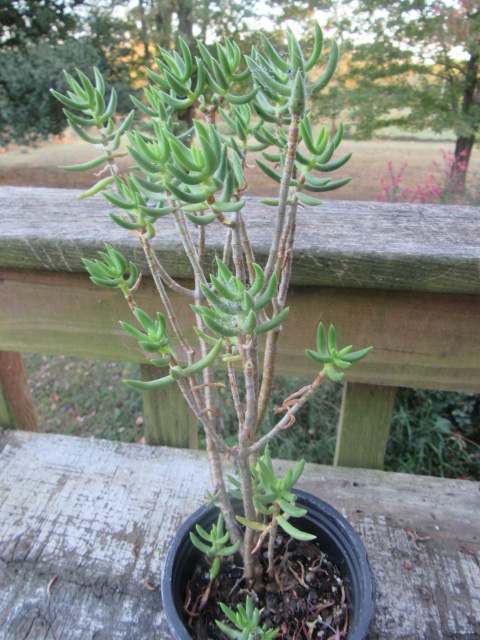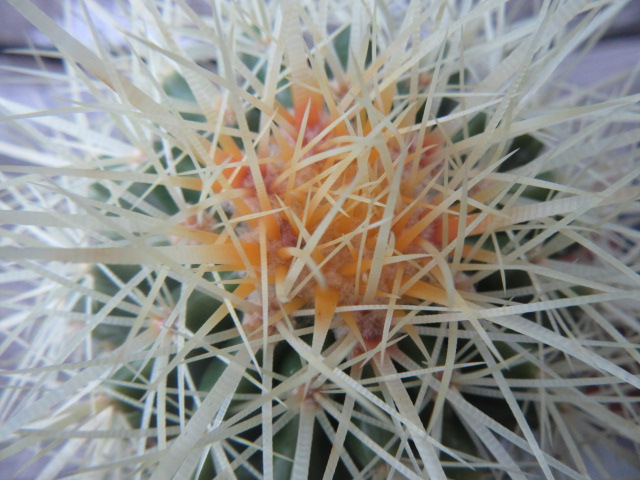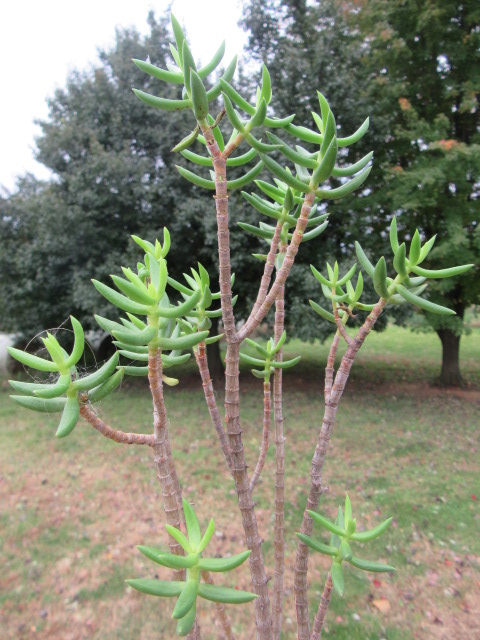
Hello everyone. I hope this post finds you well. This is the second part of the Fall update with more photos and measurements from October 15 when I moved the plants inside.
The former Western Auto building is being torn down so I decided I would get some boards from the building to make a couple more plant shelves. The shelves will replace the tables I have been using in the two front bedrooms. I may write a post about the old building in a future post… I think the old building, which is on one corner of Main and Benton Streets, was originally a bank (there was once a bank on all four corners). After the bank closed, the building was rented by Western Auto in 1938. The building itself is 140 years old. I may do a future post about the building so maybe I should take a few photos before it is completely gone… When I was in the building last week I was amazed by the number of laths on the walls and ceiling. Can you imagine how long it took to put them there?
OK, enough about the building. I am updating the plant’s pages as I go along and you can go to them by clicking on their names under the photos (not in the captions).
Let’s get started with…
<<<<Cereus forbesii f. monstrose ‘Ming Thing’>>>>

Cereus forbesii f. monstrose ‘Ming Thing’ at 2 3/4″ tall x 3 1/2″ wide on 10-15-20, #747-18.
The Cereus forbesii f. monstrose ‘Ming Thing’ is still alive and well and looking very good. This controversial little gem is very-slow growing and has FINALLY made it to 2 3/4″ tall. It was 2″ tall x 3 1/2″ wide when I brought it home from Wal-Mart on February 1, 2016 and has remained 3 1/2″ wide… I brought home my first ‘Ming Thing’ from Wal-Mart in Greenville Mississippi in 2009 when I was living at the mansion in Leland. I was glad to find another one to replace it, although MUCH smaller. I really like this cactus because it is so odd-looking being a monstrous form of the species. It has been doing much better since I started putting the cactus on the back porch during the summer. The crickets really did a number on this poor guy where it was before but it has healed nicely.
<<<<Cereus hildmannianus subsp. uruguayanus>>>>

Cereus hildmannianus subsp. uruguayanus (Fairy Castles)at 8 tall x 6 3:4 wide on 10-15-20, #747-19.
I must say the Cereus hildmannianus subsp. uruguayanus (Fairy Castles) has done much better over the summer on the front porch. I brought this plant home from Wal-Mart on January 28, 2016 and it was in a plastic sleeve and it was soaking wet. I removed the entire plant, dirt and all, from the pot and let it dry out for a few days. It has a lot of scars from crickets in 2017 but they haven’t been a problem on either the back or front porches. It has had issues growing because new growth from the scars on top of the stems are more fragile. When it was on the table on the back porch sometimes a cat would hit the top of the plant and knock new growth off while jumping on the railing. This summer I had this plant on the front porch in less sun and its color is looking much better. It actually grew 1 1/2″ taller and 2 1/4″ wider over the summer to 8″ tall x 6 3/4″ wide. Bravo!
This is the species that gets confused with the Acanthocereus tetragonus ‘Fairytale Castle’. Both are miniatures of their species. I am not sure if Fairy Castles is a cultivar or a common name of Cereus hildmannianus subsp. uruguayanus. It is a common name, but it may be a cultivar name as well since this subspecies can grow to 33′ tall in the wild… The species, Cereus hildmannianus, is usually a spineless cactus and there is an AWESOME monstrose form.
I could go on but I better move along because I really have no idea what I am talking about… I am not sure anyone really does. It would be great to see both species in the wild…
<<<<Cereus repandus f. monstruosus ‘Rojo’>>>>

Cereus repandus f. monstruosus ‘Rojo’ at 8 1/4 tall x 4 1/4 wide on 10-15-20, #747-20.
I really like the Cereus repandus f. monstruosus ‘Rojo’. I brought my first one home from Lowe’s in Greenville, Mississippi while I was living at the mansion in 2010. It looked nothing like this one and was much bigger around but not this tall. I brought this one home from Wal-Mart on March 19, 2018 when it was 5 1/2″ tall x 3 3 3/8″ wide. It is now 8 1/4″ tall x 4 1/4″ wide. So, it grew 1/4″ taller and 1/2″ wider in the last year. The industry is still using the name Cereus peruvianus f. monstruosus ‘Ming Thing’ although Cereus peruvianus has been considered a synonym of Cereus repandus for a while. Plants of the World Online lists 28 synonyms of the species…
<<<<Crassula ovata ‘Gollum’>>>>

Crassula ovata ‘Gollum’ at 8 1/2″ tall x 9 1/2″ wide on 10-15-20, #747-22.
The Crassula ovata ‘Gollum’ did very well during the summer despite a little neglect. I brought this unlabeled plant home from the Kuntry Store (one of the Amish owned stores) on May 5, 2018. I was hoping it was a ‘Lady Fingers’ like I had before but it has turned out to be ‘Gollum’. At least it seems to be ‘Gollum’. Some of the leaves look like ‘Lady Fingers’ but most of them look like the photos of ‘Gollum’. Anyway, it measured 8 1/2″ tall x 9 1/2″ wide which is an inch taller and 1/4″ wider than a year ago. I neglected to measure it when I brought it home but it was MUCH smaller. The leaves are much different than the classic Crassula ovata (Jade Plant, ETC.) which gives them their uniqueness.
<<<<Crassula tetragona>>>>

Crassula tetragona (Miniature Pine Tree) at 9 3/4″ tall on 10-15-20, #747-23.
My first Crassula tetragona died last winter for some reason. I had brought it home from Wagler’s in September 2018 and it grew to 16 1/2″ tall. When I finally gave up on it recovering I went to Wagler’s and brought home another one on March 28, 2020. She has a HUGE plant she uses for cuttings but she only had one smaller one. Its stem is crooked because it was growing sideways (I turned the pot so you can’t tell) but it was a nice plant otherwise so I brought it home. It measured 7 3/4″ tall at the time and now it is 9 3/4″ tall. It grew 2″ over the summer. It is quite common for the leaves to fall off and root in the pot as you can tell in the photo.
<<<<Echinocactus grusonii (var. albispinus)>>>>

Echinocactus grusonii (var. albispinus) at 3 1/2 tall x 2 3/4 wide on 10-15-20, #747-24.
When I measured these two characters they seemed to be the same size… The Echinocactus grusonii (var. albispinus) (Golden Barrel Cactus) are always joking around with me so I thought they were doing it again. The green pot is a little shorter than the other one, but oddly enough their measurements were the same. Usually one is a little taller and one is a little wider but I measured several times and I kept coming up with 3 1/2″ tall x 2 3/4″ wide for both of them. Last year one was 3″ tall x 2 3/4″ wide and the other was 2 7/8″ tall x 3″ wide. I always called one “Greater” and one “Lessor” but I can’t tell which is which. When I ask them which is which they point their fingers at each other. I always ignore the spines when I measure cactus otherwise they would be much bigger. They are intimidating enough as it is. Oh yeah, and if you water them a lot a day or so before you measure them they will be bigger than if they have been dry for a while. Maybe that’s just my opinion…

Echinocactus grusonii (var. albispinus) from the top on 10-15-20, #747-25.
These spiny guys always show a little color on their heads but their spines are whiteish. The species has smaller spines and are more yellow. Plants of the World Online listed “var. albispinus” as a synonym mainly because the variety name was invalidly published in 1981. When you sit the different varieties of a species together you can definitely tell there are differences which should be recognized with different variety names. Just makes sense but they didn’t ask me… I have had this discussion with “the guy” and I am told I can call them what I choose. GEEZ!!! Are there no rules? 🙂 Maybe I better check the link on the page for this plant to see if the intraspecific name is accepted yet…
WHOA! WAIT A MINUTE!!!
I just checked the link for the species and the name has changed!!! Echinocactus grusonii is now Kroenleinia grusonii!!! How did that happen?
OK, so with that, I am going to bed. I was on a good roll and it is late. I was going to finish this post before I went to bed then I hit this snag. GEEZ! Now I will have the THREE “W’s” on my mind while trying to sleep… WHY, WHO, AND WHEN.
DAY TWO…
The history of this species is interesting because it is one of very few that have had the same name since it was named and described the first time. It was named by H. Hildmann was back in 1886 and has remained unchallenged. The genus, Echinocactus, was named in 1827 and there were never very many species included. My last update on this species page was October 11, 2019 when I added the photo from when I moved the plants inside. There were still only six accepted species in the genus and Echinocactus grusonii only had three synonyms. Two of the synonyms were other Echinocactus species that were determined to be E. grusonii and the third synonym was… you guessed it… Kroenleinia grusonii (2014). Even though the later name was validly published due to findings from testing, there is a lengthy process and it sometimes takes SEVERAL YEARS for the name to be “officially” accepted. Testing proved that Echinocactus grusonii was actually more closely related to the genus Ferocactus than Echinocactus and was given its OWN genus… So, the new scientific name is supposedly…
Kroenleinia grusonii (Hildm.) Lodé
It was named and described as such by Joël Lodé in International Cactus Adventures in 2014. Joël Lodé has quite a website called Cactus Adventures International and has written several books and… Well, there is A LOT of information on his website. His latest work is “Taxonomy of the Cactaceae” which seems to be an ongoing series. So far I think there are four volumes. The first two are mentioned on his website and include a total of 1,436 pages and over 9,500 photos. He has been publishing journals since 1988 but only in English since 1996.
So, now I guess I have a little updating to do…
<<<<Echinopsis ‘Rainbow Bursts’>>>>

Echinopsis ‘Rainbow Bursts’ at 4″ tall x 7″ wide on 10-15-20, #747-26.
Hmmm… The Echinopsis ‘Rainbow Bursts’… Somehow I am at a loss for words whenever I look at this cluster. Every time I pick up this pot I look at and say, “Yeah, I know.” I don’t really know but I am just trying to be supportive. When I bought this plant from Walmart on February 1, 2016 it was only 2 1/4″ tall x 3 1/2″ wide. There were a few small, umm, offsets clinging all the way around it. The tag said it was an x Echinobivia ‘Rainbow Bursts’ and that it was a cross between Lobivia and Echinopsis. Well, the Lobivia genus became a synonym of Echinopsis quite some time ago and most of the species in the genus were determined to be synonymous with various Echinopsis species. At first, some of the species were transferred to other genera, but later they also became synonyms of Echinopsis. SO, as it turned out, ‘Rainbow Bursts’ has been an Echinopsis the whole time. Of course, the industry is still selling these incorrectly labeled plants. The interesting thing is I have no way of telling what species of Echinopsis it is. Echinopsis species flower in several different colors and they are spectacular. There are posts online from several people who bought this plant with photos of various colors of flowers. Llifle lists Echinopsis ancistrophora subs. arachnacantha that produces flowers of various colors that used to be Lobivia arachnacantha… This is a fairly new listing on Llifle because it wasn’t there before. Plants of the World Online does not list this subspecies as an accepted name.
<<<<Echinopsis huascha>>>>

The smallest Echinopsis huascha at 3 7/8″ tall x 2 1/4″ wide on 10-15-20, #747-27.
I checked to make sure this is still the correct name. The smaller Echinopsis huascha (Desert Blooming Jewel or Torch Plant) in the pot by itself measured 3 7/8″ tall x 2 1/4″ wide. So, it grew 5/8″ taller and lost a little around the waist. It’s not uncommon for cactus and has a lot to do with the amount of water they have retained. This plan measured 3″ tall x 2″ wide when I brought it home from Lowe’s on September 2, 2018. I accidentally took a photo of its bad side. Hmmm… Brown spots can be caused by several things but this looks like possibly fungal lesions that can be caused by cool, damp weather.

The pot of six Echinopsis huascha. The largest plant in the center measured 6 7/8″ tall x 3 1/2″ wide on 10-15-20, #747-28.
The pot of six Echinopsis huascha are all doing fine and have grown a lot. The largest plant in the center measured 6 7/8″ tall x 3 1/2″ wide when I measured it on October 15. It was only 3″ tall when I first measured it on November 29, 2018 when I took the plants outside for a photoshoot. It is weird, but in the above photo, you can’t tell how big they are really getting. Well, let me take another photo and sneak it in…

Echinopsis huascha inside 10-23-20, #750-2.
A few of the plants are nearly touching and this is an 11″ diameter pot. I spaced them out evenly in the beginning and a few are growing really fast.

Echinopsis huascha offset on 10-15-20, #747-29.
The big plant in the center has a kid… I am a grandpa again. GEEZ! But, the baby is not growing on the side like E. ‘Rainbow Bursts’.
My Echinopsis huascha companions resemble the description Llifle (Encyclopedia of Living Forms) gives for Echinopsis huascha var. grandiflora but that infraspecific name wasn’t validly published. Plants of the World Online currently lists 43 synonyms of the species (up one from the last time I updated its page). This species has moved from one genus to another since it was first named Cereus huascha by Frédéric Albert Constantin Weber in 1893. When I brought the plants home the label said they were Trichocereus grandiflorus hybrids. Hmmm… Anyway, it was given its current name in 1974.
The reason I have so many of this species is because I kind of screwed up. I was shopping for new cactus at Lowe’s and found the small one on a discount rack. Then I walked around a little and found a big pot of six cactus and a bigger one in the center that was dead. The whole pot was discounted quite a bit so I put it in my cart as well. When I got home I saw the label on the big pot was the same as the smaller one…
OK, I will stop here and get ready for the next post. It is 2:22 AM.
Until next time, be safe and stay positive, stay well, and always be thankful. COVID is in our midst. 🙂















